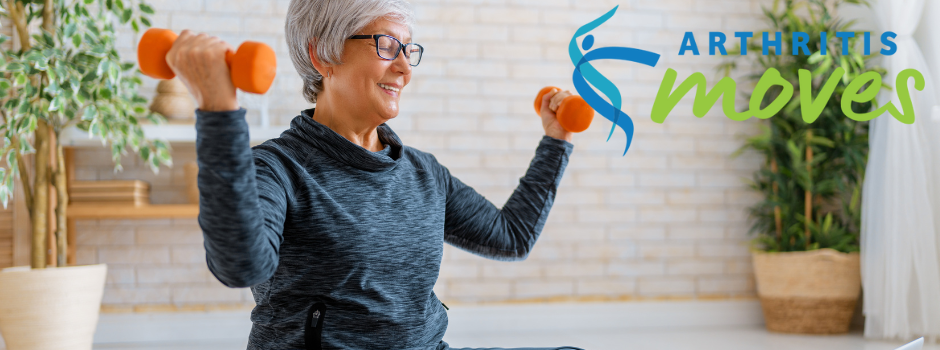Choosing the Right Shoes for Arthritis: Finding Comfort and Support
August 2023
Arthritis can be a challenging condition that affects the joints, making everyday activities like walking a potential source of discomfort. Wearing the right pair of shoes may make a significant difference in managing arthritis-related foot pain and improving overall mobility.
In this article, we will explore essential factors to consider when buying shoes for arthritis, guiding you towards finding a pair that provides optimal comfort and support.
.png)
The feet and ankles can be affected by several types of arthritis, including osteoarthritis, and inflammatory types such as rheumatoid arthritis. Lets have a look at some ways we can find comfort and support when buying the right pair of shoes.
#1. Cushioning and Shock Absorption
Look for shoes with ample cushioning and shock-absorbing features. Cushioning helps reduce the impact on your joints while walking, while shock absorption can ease the pressure on sensitive areas.
Shoes with cushioned insoles, midsoles, and outsoles can make walking more comfortable and reduce stress on arthritic joints.
#2. Arch Support
Arthritis can sometimes lead to changes in foot structure, including altered arches. Select shoes with great arch support to provide stability and maintain the natural alignment of your feet.
Custom orthotic inserts can also be beneficial, as they can provide personalised support tailored to your specific foot needs.
#3. Wide Toe Box
Look for shoes with a wide toe box to accommodate any swelling or deformities associated with arthritis. A spacious toe area allows your toes to move freely and reduces pressure on the joints, providing extra comfort during walking.
#4. Lightweight and Flexible
Opt for lightweight and flexible shoes to reduce the strain on your feet and joints.
Bulky or heavy shoes may add unnecessary pressure and make walking more challenging. Lightweight and flexible shoes allow for a more natural and comfortable stride.
#5. Low Heel
Choose shoes with a low or flat heel to minimise pressure on the forefoot and reduce the strain on the knees and hips. High heels can alter your gait and place additional stress on your feet, which is particularly problematic for individuals with arthritis.
#6. Adjustment Fastenings
Shoes with adjustable fastenings, such as laces, straps, or buckles, allow you to customise the fit to your specific needs. Adjustable fastenings can accommodate foot swelling, ensure a snug fit, and provide additional support during walking.
Shoes with velcro straps, for example, can make it easier for fastening and unfastening if you also have arthritis in the hands.
#7. Breathable Materials
Look for shoes made from breathable materials like mesh or leather to keep your feet cool and dry.
Moisture-wicking properties in the shoe's interior can help prevent discomfort and skin irritations, which can be more pronounced in
individuals with arthritis.
#8. Try Before You Buy
When buying shoes for arthritis, always try them on and walk around the store to assess their comfort and fit. Pay attention to any areas of potential friction or pressure points that might worsen foot pain.
.png)
Investing in the right pair of shoes can significantly improve the quality of life for individuals with arthritis. The right shoes can
provide the comfort and support needed to manage foot pain, reduce stress on the joints, and enhance overall mobility.
When shopping for shoes, keep in mind the factors discussed in this article - cushioning, arch support, wide toe box, lightweight design, low heel, adjustable fastenings, and breathable materials.
By making informed decisions and choosing shoes that cater to your specific foot needs, you can enjoy more comfortable walking and better manage the challenges of arthritis.
Remember, comfort is key, and the right pair of shoes can make a world of
difference in your day-to-day life with arthritis.
How can we help?
- Register for our online exercise programs, Arthritis Moves, and Dance for Arthritis
- Access more information on arthritis, exercise and overall health. Download free information sheets, or read a range of arthritis articles.
- Speak to an Arthritis Assist Peer-Mentor who knows exactly what you're going through and understands the challenges of living with arthritis.
- Join an Online Support Group to connect with other people facing the challenges of life with arthritis.
-
Have questions about living with arthritis? Call our free infoline 1800
011 041 to
speak with a member of our health team.

JOIN OUR 12-WEEK ONLINE 'ARTHRITIS MOVES' EXERCISE PROGRAM.
Always talk to your doctor and/or health professional before starting an exercise program. A physiotherapist or exercise physiologist can suggest safe exercises and make sure you are doing your exercises correctly.




